The list of reasons to love the UK and Ireland is endless, but here are our top 50…
Accents
When the world thinks of our accent they quickly think of London and the Queen’s English, but the breadth of regional dialects in the UK is far more vast. From the musical sound of the Geordie accent in Newcastle and the choral sounds of the Welsh in Cardiff and beyond, to the rolling ‘r’s of Birmingham‘s Brummie accent now recognised world-wide thanks to the Peaky Blinders, our accents are a wonder to behold.
Architecture
With medieval castles dating as far back as 1067 in Hertfordshire to the modern sky scrapers of today – the UK and Ireland are home to some outstanding architecture. The beautiful Georgian architecture of Bath made it the first entire city to be named an UNESCO World Heritage Site, whilst modern creations such as the spectacular Titanic Belfast beautifully intertwine the old and the new and attract visitors from all over the world.
Drag
Drag is now a global phenomenon thanks to shows such as Ru-Paul’s Drag Race, but did you know that drag can be traced back to Shakespearian England? Only men could ‘tread the boards’ and therefore had to play female characters, which would be written into scripts as ‘Dr.A.G’ – dressed as girl.
Afternoon tea
If there’s one thing the English are fantastic at it’s drinking tea, and they have cleverly combined this with the art of eating delicious cakes and dainty sandwiches, and thus was born ‘afternoon tea’. You’re sure to find a classic afternoon tea venue wherever you are in the UK, but you will also find contemporary and hybrid-themed versions that make for a great day out and an extremely full stomach.
Castles
The landscapes of the UK and Ireland are generously decorated with vast amounts of castles, historical landmarks of ancient times gone by. Some of the most impressive include Edinburgh Castle, built atop an inactive volcano, Glenveagh Castle in County Donegal, Raglan Castle in Monmouthshire and of course Windsor Castle, residence of the Queen in Berkshire.

Edinburgh’s castle perches atop an inactive volcano
Whisky
Scotland is still the biggest producer of whisky in the world and has been for over 100 years. There are currently 120 distilleries in Scotland and it is thought it was first distilled here in the 1400s. Ireland are also big producers of the spirit – did you know Irish whiskey is spelt with an ‘e’ where as the Scottish product is simply ‘whisky’?
Fish and chips
You can’t visit the UK or Ireland and not eat fish and chips – coastlines up and down are filled with the traditional eateries. There’s nothing like taking a piping hot tray of freshly-battered fish and chips complete with lashings of salt and vinegar and walking down to the seafront to enjoy them, it’s a rite of passage for every international visitor and will leave you feeling like a local.
Football
England invented a game of running around kicking a ball in the mid-19th century (although the Chinese claim to have played a version centuries earlier). Mention the name ‘Liverpool’ to anyone and their reaction will be ‘football’. The city boasts three historic football teams – Premiership clubs Liverpool and Everton and Tranmere Rovers. In Manchester football also sets the pulses racing. Not only are the city’s two leading clubs, United and City, famous worldwide brands, but their local rivalry is played out twice a season in front of tens of thousands of passionate fans in derby games. London has 13 professional teams (including the mighty Arsenal) in the city including England’s national team. Wembley Stadium – England’s home ground – is the largest venue in the capital with 90,000 seats.
Fine dining
There are a total of 187 restaurants in the UK and Ireland that have been awarded one or more Michelin-stars, and 264 that have received an AA Rosette, meaning for the foodies amongst us that you will never have to travel too far for a standout meal.
Wildlife
In Northumberland look out for seabirds, whales and dolphins on a cruise from Seahouses. Mountain hares, puffins and peregrine falcons – as well as basking sharks, Atlantic seals and porpoises are among the wildlife sighted near the Causeway Coast of Northern Ireland. Bottlenose dolphins, porpoises, seals and birds may all be seen on boat trips around the spectacular Cardigan Bay in Wales. In the Scottish Borders, ospreys and golden eagles will regularly fly overhead while otters, water voles and kingfishers have made their homes on the river banks. A day’s stroll can also be rewarded with sightings of red squirrels, roe deer and foxes.
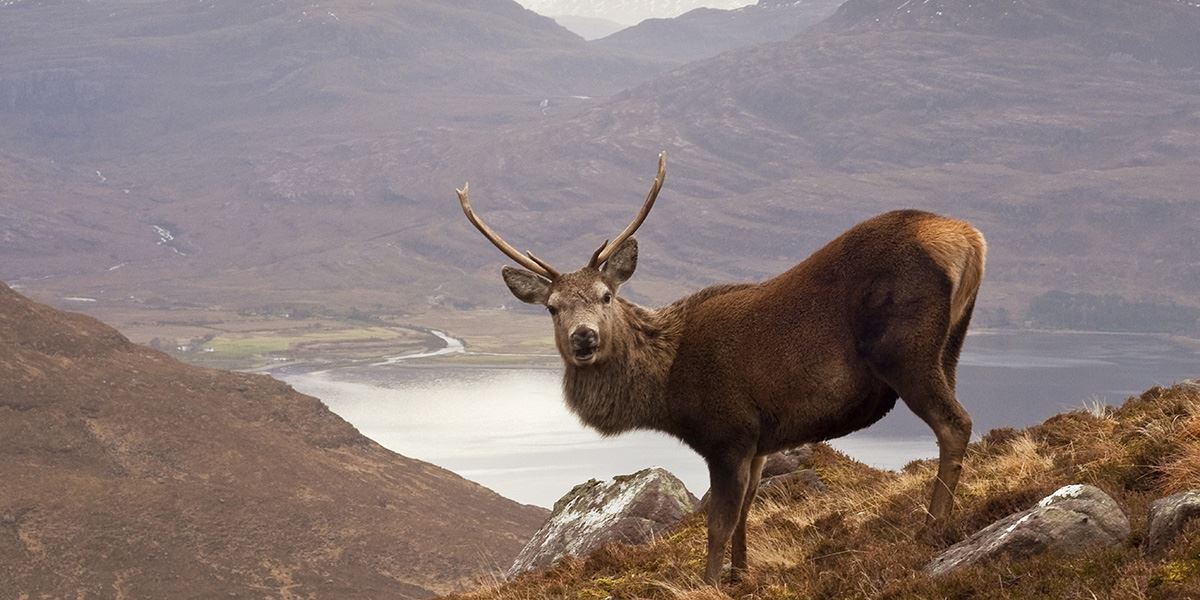
‘Monarch of the Glen’ red deer stag overlooking Loch Torridon, Beinn Alligin, Scotland
Quaint villages
The UK and Ireland are full of picturesque market towns and villages. Castle Combe in Wiltshire is often named ‘the prettiest village in England’ and Surrey, with its unspoilt countryside, boasts quintessential English villages, some of which have inspired some of England’s most influential writers. The Lake District is one of the most beautiful parts of Britain and harbours a number of lovely villages and towns. Another gem is Portmeirion in Wales. This tourist village in Gwynedd, North Wales, was designed and built between 1925 and 1975 by Sir Clough Williams-Ellis. The design is reminiscent of an Italian village with enchanting pastel buildings, a Gothic Pavilion and the Bristol Colonnade.
Famous bridges
Our bridges span not only some of our greatest scenic rivers, gorges and cliffs but the centuries, too. They’re architecturally spectacular, have intriguing stories to tell and are attractions in their own right. One of the world’s most iconic bridges, Tower Bridge in London, took eight years to construct, before being finally unveiled in 1894. Built in 1779, the incredible Iron Bridge in Shropshire was the world’s first of its kind. Designed by English iron master Abraham Darby, it represented a major turning-point in the Industrial Revolution. Another outstanding feat of engineering is the Clifton Suspension Bridge, in Bristol, the Tyne Bridge in Newcastle, the lesser known but equally impressive Transporter Bridge in Middlesborough and the Clyde Arc in Glasgow.
Inventors
Many of the world’s greatest creations have been invented in here, from chocolate bars and the light bulb to the steam engine and the thermos flask. George Stephenson, Michael Faraday and Sir Isaac Newton are just a few famous inventors who called the UK home.
Landscapes
There are many wonderful sites and natural wonders creating spectacular landscapes. Some of our favourites include the Yorkshire Dales National Park, a medley of grassy mountainous terrain with strange ruins and rock formations that punctuate the landscape. East Sussex has miles of South Downs countryside, woodland, downland and dramatic cliffs. The county covers part of the High Weald Area of Outstanding Natural Beauty, which is one of the best surviving medieval landscapes in northern Europe. Cheddar Gorge in Somerset is not only is a scenic natural wonder, but a very important archeological site as well. The oldest human skeleton, dubbed a Cheddar Man, was found here, providing an important insight into the history of the British Isles.
Food
Traditional roast dinners, stotties, crumpets, salt and vinegar crisps, Welsh cakes, oatcakes, shortbread and soda bread – the list of British, Scottish, Welsh and Irish foods is extensive, and delicious!
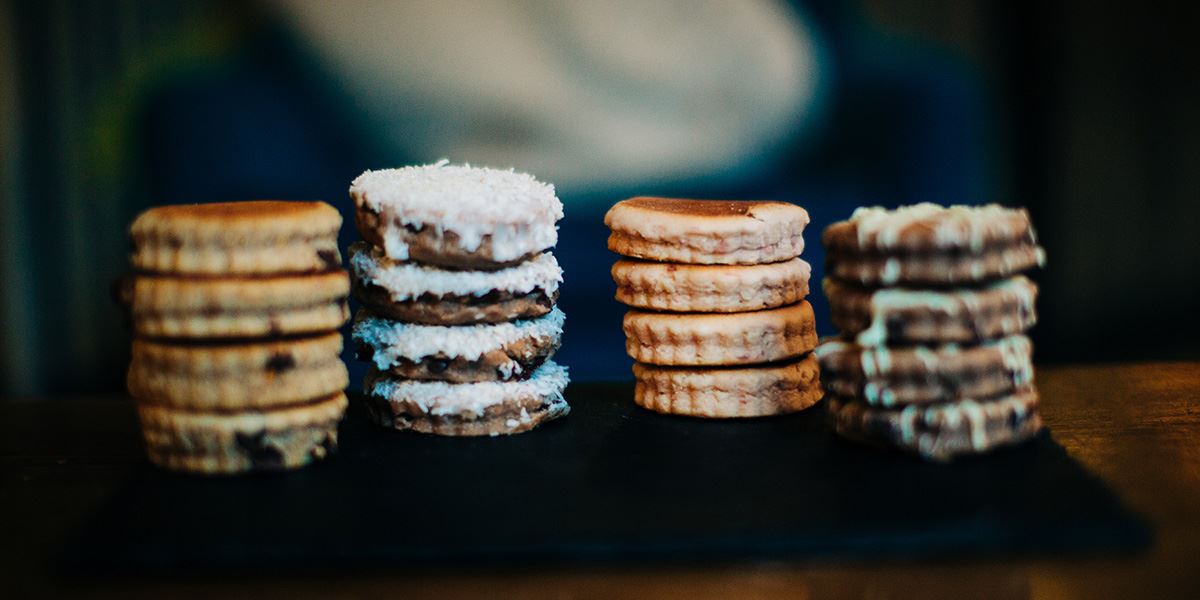
Scrumptious delicacies from MamGu Welshcakes, Cardiff
Open air museums
While there’s obvious charm about wandering around a gallery looking at lovely art, a living history museum is a tourist experience like few others. Beamish: The Living Museum of the North tells the story of the North East in the 1820s, 1900s, 1940s and 1950s. Situated on the edge of the Chilterns, a stunning Area of Outstanding Natural Beauty, Chiltern Open Air Museum is a beautiful open-air museum with an outstanding collection of historic buildings and a working traditional farm. The Black Country Living Museum is one of the finest and largest open-air museums in the UK. After very humble beginnings, a bright idea and 40 years of inspiration, Dudley’s 26-acre museum remembers the smoke-filled infancy of modernity in 19th-century West Midlands.
The Lake District
Visitors from all over the world flock to the UK to visit the Lake District. Located entirely in the county of Cumbria, this mountainous region is built up from peaks and valleys that have formed slowly over the last 2 million years. This beautiful landscape has also inspired many literary greats over the years.
Markets
At Christmas time you’ll find fabulous markets all over the UK and Ireland; Manchester, Edinburgh, Belfast and Winter Wonderland are some of the best, but you’ll also find spectacular markets in more rural areas such as the Blenheim Palace Christmas Market in Oxfordshire. The rest of the year round London is the place to be for quirky markets, check out Camden and Portobello Road markets for thrifty items.
Film locations
The UK and Ireland are filled with beautiful landscapes and vistas as well as grungy urban spaces that lend themselves to some fantastic stories and films. Titles such as Robin Hood, Braveheart, Notting Hill, Bridget Jones, Harry Potter, James Bond and many more have all been filmed here in the UK.
Gardens
Royal Botanic Gardens, Kew is London’s largest UNESCO World Heritage Site. Climb the Dragon Pagoda, step inside the Temperate Glasshouse and view the largest and most diverse collection of living plants in the world. Belfast’s beautiful Botanic Gardens are spread over 28 acres, its most noteworthy feature is the Palm House conservatory, which is one of the earliest examples of curvilinear cast iron glasshouses anywhere in the world. Bodnant Gardens in Conwy, spans 80 acres of hillside in North Wales, the garden is best known for its luscious Laburnum arch which flowers in May and June. England has some of the finest gardens in the world, from dramatic historic landscapes designed by ‘Capability’ Brown to fragrant English rose gardens.
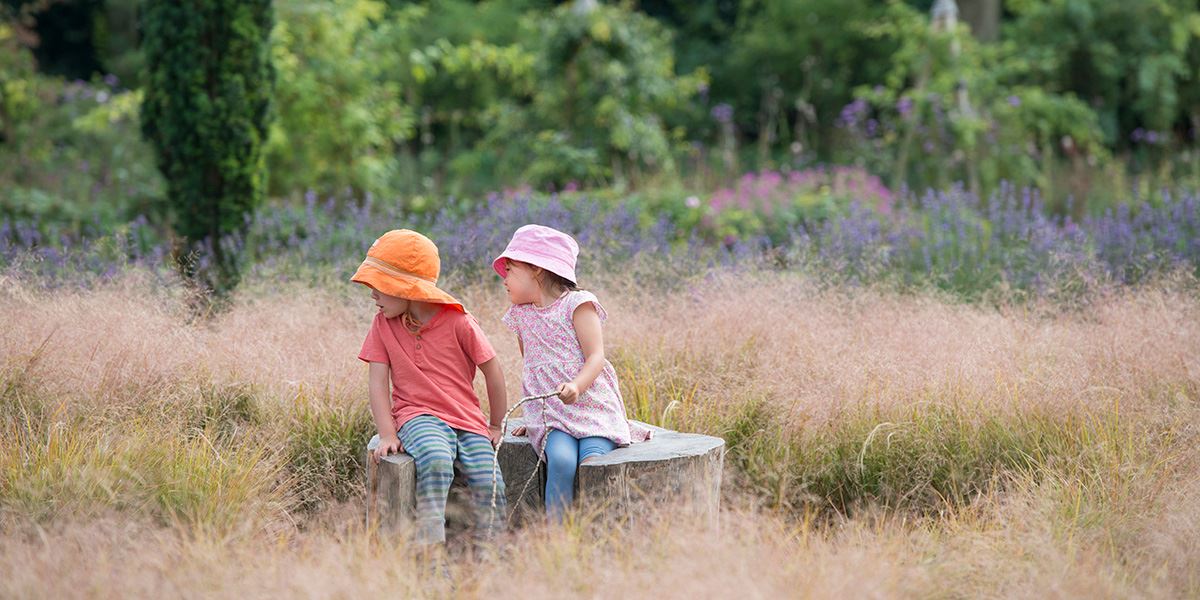
Cambridge University Botanic Garden, Cambridge
The birth of the railways
The railway system in the UK and Ireland is the oldest in the world. The coal-carrying Middleton Railway, near Leeds, introduced rack-and-pinion locomotives to haul its trains in 1812. Formerly, coal had been transported using horse-drawn wagons. In County Durham, the Stockton and Darlington Railway company, which operated from 1825 to 1863, was the first in the world to use steam locomotives. During the Victorian era, the first ever underground railway opened, in 1863, running between Paddington and Farringdon Street. The first complete line – the Circle Line – was opened 21 years later and by the end of the century, in 1890, London launched the world’s first deep-level electric railway.
Currency
Entirely unique to the UK and the Channel Islands (and a remote little country called South Georgia and the South Sandwich Islands), each coin of Pound sterling is a little bit of history – with monarchs and historical events printed onto each side. These days the Royal Mint print highly-collectable coins with imagery from British favourites such as Beatrix Potter, Paddington Bear and special commemorative events. If you find a coin in your loose change that makes you think “oh that looks nice”, it might be worth hanging onto and giving the coin a Google, as it might just be worth more than it first appears.
Myths and legend
From St George and the dragon he slayed to the Boggarts of Northern English folklore, the UK and Ireland certainly aren’t short of myths and legends. Scotland is home to the illusive Loch Ness Monster, while Ireland is of course home to the Leprechauns and the widely feared goblins: The Pooka.
Rugby
Warwickshire is the ancestral home of rugby – where schoolboys in the town of the same name invented the sport in the early 19th century. Legend has it that 16-year-old William Webb Ellis “with fine disregard for the rules of football” as played in his time at Rugby school, took the ball in his arms and ran with it, creating the sport’s distinctive feature. Wasps, one of the biggest names in rugby union, play out of Coventry’s Ricoh Arena after relocating from London. Rugby runs deep in Wales, too. The Principality Stadium in Cardiff is the home of Welsh rugby, and, due to its central location, when Wales wins a home game, the excitement permeates through the entire city centre. Carnival-style, the streets throng with merrymakers, and the pubs are packed to bursting point.
Nightlife
With all of the brilliant cities in the UK you really are spoilt for choice when it comes to nightlife. It’s cosy traditional bars galore in Inverness, lively musical bars in Dublin and of course special mention goes to Newcastle upon Tyne, which is not only home to some of the best nightlife in the UK, the nightlife scene is arguably one of the best in the world.

Temple Bar, Dublin, makes for a fantastic night out
Shakespeare
William Shakespeare’s birthplace in Stratford-upon-Avon in Warwickshire brings in 10 million visitors each year. Wandering around the thatched roofs and timber clad buildings you could be in the middle of one of his sonnets. Enjoy the restored Tudor rooms and live presentations from engaging Shakespearean characters. The first theatres were built in London in the 17th century; the most famous being The Globe, which was partly owned by William Shakespeare. The original theatre burnt down in 1613 and was immediately rebuilt, but closed by the Puritans in 1642. In the 1990s a new Globe Theatre was built not far from the original theatre and today it thrives with regular productions of Shakespeare plays.
Zoos
London Zoo is the world’s oldest scientific zoo, it opened in 1828 and still operates to this day. You can also find brilliant zoos in Edinburgh, Belfast, and Pembrokeshire and all over the UK and Ireland. Read our blog on the best zoos in the UK and Ireland.
Fashion
From the rebellious punk style of the 60s lead by Vivienne Westwood to the ethically conscious Stella McCartney of today, British designers have been at the forefront of global fashion for many years. Our supermodels have graced international runways and British brands have become household names; from Burberry and Alexander McQueen to Paul Smith and Alice Temperely – British fashion is up there with the best.
Seaside towns
Possibly one of the best things one can do when visiting the UK and Ireland is take a stroll along the beach and eat fish and chips, and luckily the seaside towns all over the region provide the perfect locations for doing as such.
Theatres
The performing arts have an incredibly long-standing tradition in the UK and Ireland. From London’s West End to the regional theatres of England, Scotland, Wales, Northern Ireland and Ireland have a wonderful pedigree. Shakespeare’s Globe is probably one of the most famous theatres in the world. The original Globe Theatre was built by Shakespeare’s playing company in 1599, but unfortunately was destroyed in a fire. It was rebuilt but closed shortly after, however, the magic can still be experience at its modern reconstruction – Shakespeare’s Globe. At over 200 years old, the Theatre Royal in Bath is one of England’s most reputable theatres with a seating capacity of over 900.
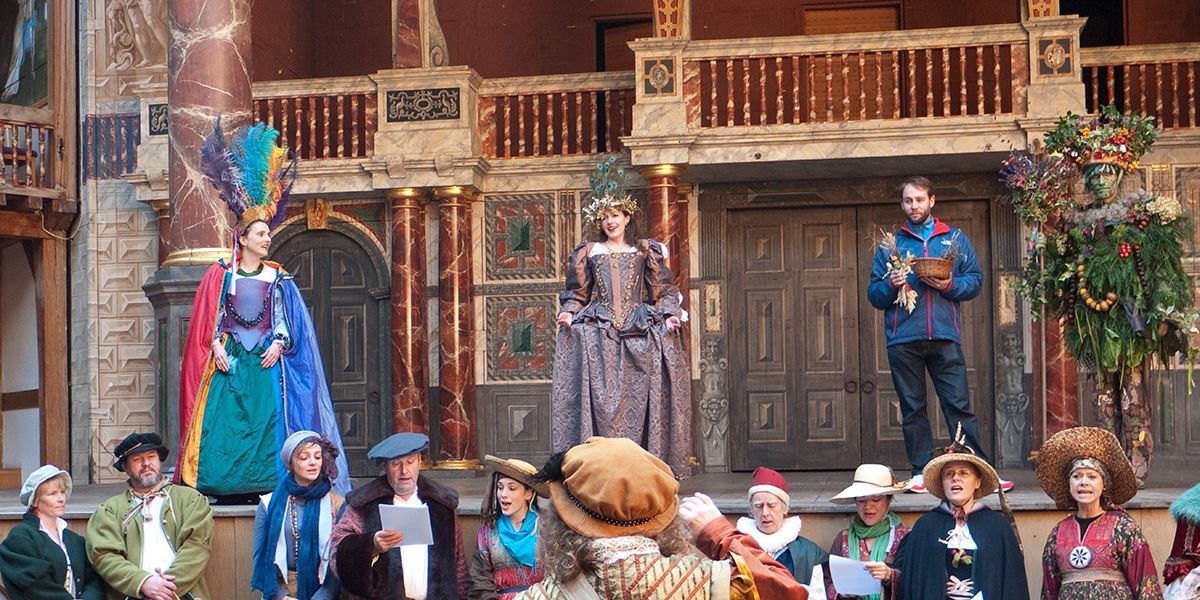
Shakespeare’s Globe, London
Shopping
Some of the best shopping in the world can be found in London, from quirky independents to designer brands, the capital has it all. Manchester, Birmingham and Leeds also offer great big brand and independent shopping. You’ll find fabulous small independents all over the country, selling a range of local delicacies and hand-made goods.
Harry Potter
The best selling book series in history, Harry Potter, has delighted and captivated readers the world over. JK Rowling’s magical masterpiece about ‘the boy who lived’ has sold over 500 million copies in total, with the first book in the series, Harry Potter and the Philosopher’s Stone, selling 120 million copies, making it one of the best-selling books of all time. Written in the cafes of Edinburgh, there are many places within the novels that are inspired by the buildings and landscapes of the UK, film locations can be found in Durham, Fort William and Northumberland.
Stately homes
From the beautiful Georgian architecture of Bath to the exquisite Castle Howard in Yorkshire that took over 100 years to build, the UK and Ireland are not short of beautiful stately homes. Abbotsford House in the Scottish Borders was the former residence of Sir Walter Scott, the 19th-century novelist and poet who popularised tartan while the impressive Clifton House in Belfast combines Georgian elegance with its city centre location. Many of these buildings are the sites of pivotal moments in history and have inspired many a literary great. Wherever you choose to visit in the UK and Ireland, you won’t have to travel far to get a slice of opulent design.
The Royal Family
The Royal Family are a huge draw for tourists who love to visit historical sites and learn all they can about the monarchy. You can’t talk about the Royals and not mention Buckingham Palace, which has served as the official London residence of the Royal Family since 1837 and today serves as administrative headquarters of the Queen. It’s no surprise that Windsor Castle in Berkshire is also one of the most-visited places by tourists, as the Queen still regularly takes up residence here and it was also where the Prince Harry and Megan tied the knot in May 2018. You can also find Balmoral Castle located in Aberdeenshire, the Royal Family’s Scottish place of residence that was purchased for Queen Victoria by Prince Albert in 1852 after they were so struck by the beauty of the Highlands and decided they would like to return.
The weather
We LOVE talking about the weather here in the UK, whatever it may be. If it’s raining, you can be sure Brits will strike up a conversation about it – similarly if it’s sunny, you can be sure that the entire population will be striking up conversations nationally about how nice it is to enjoy some sunshine. The south-western parts of the UK arguably have the best weather, with areas such as West Sussex and Cornwall getting the most hours of sunshine annually. If you prefer cosying up with blankets and hot drinks then arguably you will find the best weather in colder climes such as Ayrshire and Arran – or anywhere in Scotland generally as the further north you go, the colder it gets.
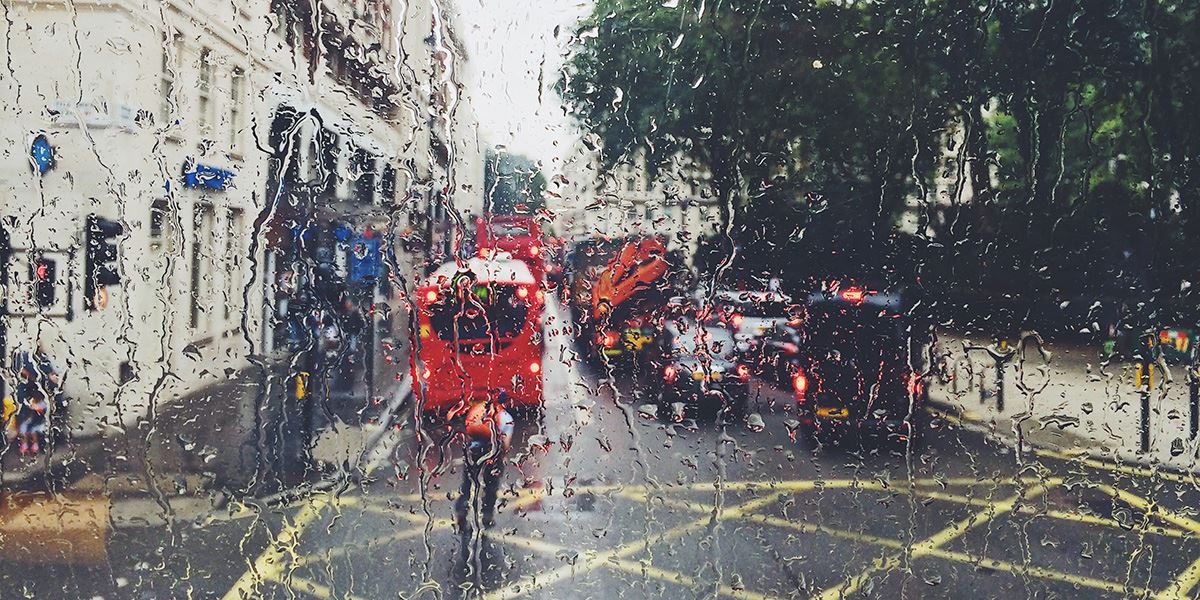
Rain is a regular sight in the UK and Ireland
Multi-culturalism
Britain has a long history of absorbing people from different cultural groups. Many people date the beginning of modern Britain back to 1066 when French invaders conquered the “English” king and took over the country. London is one the world’s most multicultural cities and many nationalities make up the fabric of the city. Roman soldiers and Jamaican airmen and other people from around the world have helped shape the city. Today in London there are over 300 languages spoken in London, more than any other city in the world.
UNESCO World Heritage sites
The UK and Ireland has more than 30 World Heritage sites. Visit the Giant’s Causeway in Northern Ireland or Stonehenge in Wiltshire. Durham Castle and Cathedral is also magnificent, as is Ironbridge Gorge in Shropshire. Cities have also been honoured across the UK, Bath was inscribed by UNESCO in 1987 in recognition of the city’s architecture and in 2005 Edinburgh was given the same honour for its Medieval Old Town and the Georgian grandeur of its New Town.
Music
Producing some of the world’s finest musicians, the UK and Ireland has born legends like The Beatles from Liverpool – biggest selling artists of all time with over 260 million record sales. Elton John, U2, Rod Stewart, Queen, Led Zeppelin, The Rolling Stones and Pink Floyd also feature as some of the best-selling artists in the world. Today we produce world-class musicians, with live music available to enjoy in every town and city and our music festivals like Glastonbury, Leeds, Reading and Isle of Wight are legendary.
Literary giants
Great Britain is home to some of the world’s most notable writers. From Harry Potter to Shakespeare, the plots and protagonists of famous British books are a huge part of popular culture. At the Jane Austen Centre you can discover how one of the most important writers made Bath her home from 1801 to 1806. Haworth was the home of the Brontë sisters. Walk the cobbled streets and visit the Parsonage where Charlotte, Emily and Anne lived or take some refreshment at the Black Bull pub opposite the parish church where their father Patrick was minister. Then take a good stroll out of town to the Brontë Waterfall and let the moors envelop you.
Spooky history
Stirling Castle has its fair share of ghostly tales. The ‘Pink Lady’ is said to have been a noblewoman engaged to a knight who starved to death inside the castle. Chillingham Castle is a 13th-century stronghold in Northumberland and has an extraordinary ownership bloodline which runs back to the 1200s. Visit the Torture Chamber or try a Ghost Tour. It should come as no surprise that the Tower of London has a very grisly past. This former royal residence and prison has seen centuries of death, destruction and torture. In 1536, Anne Boleyn, the second wife of Henry VIII, infamously lost her head here, and it’s said that her ghost strolls the castle grounds (with her head still intact).

Chillingham Castle, Northumberland
Global cuisine
The UK and Ireland are fantastic places for multicultural food. All sorts of cultures have had settlements here over the years, and their influence is clear in local food to this day. Japanese, Mexican, Indian, Chinese and Indian restaurants and street food are staples in any city, and American-influenced burger chains. Indian food has had such an impact on British cooking that elements of the two food cultures have now merged into an Anglo-Indian mix of flavours. Bradford is the undisputed king of curry having won Britain’s Curry Capital award six years in a row (2011-2016).
Funny places names
Britain’s weird, rude and delightfully odd place names are not only bewildering but also truly world-class. Our favourites include Mudford Sock in Somerset, Nomanslands one in Wiltshire and another in Devon. Devon is also well-known for being the home of beer – well, a village called Beer at any rate. There’s some division over where the name comes from, but it’s probably linked to the Ango-Saxon beauru (“grove”).
Beer
The UK and Ireland are the birthplaces of some of the world’s best beers. There’s Guinness from Dublin, Tennents from Glasgow and beauties like the Newcastle Brown Ale from England. Small independent breweries are now popping up all over the UK and Ireland, producing a range of different craft ales and lagers with fabulous flavours and even better names as beer becomes ever-more popular.
Sense of humour
Joking aside, we really do have a unique sense of humour which is more subtle and more highly developed than other nations. Negative humour, teasing and ridicule together with self-disparaging humour is unique to the UK and Ireland. Think of Fawlty Towers, Father Ted, Mrs Brown’s Boys and Blackadder!
The full-cooked breakfast
Throughout the UK and Ireland, the full breakfast is well known. It is not usually eaten every day (because of its size!) but saved for weekends and holidays. The key ingredients are sausage, bacon, eggs and beans. But there are variations. In England you can expect black pudding, beans or bubble and squeak (potatoes and cabbage), and fried bread. In Ireland (an Ulster fry in Northern Ireland) expect soda bread or farl. In Scotland you might find Haggis or oatcakes on your plate.
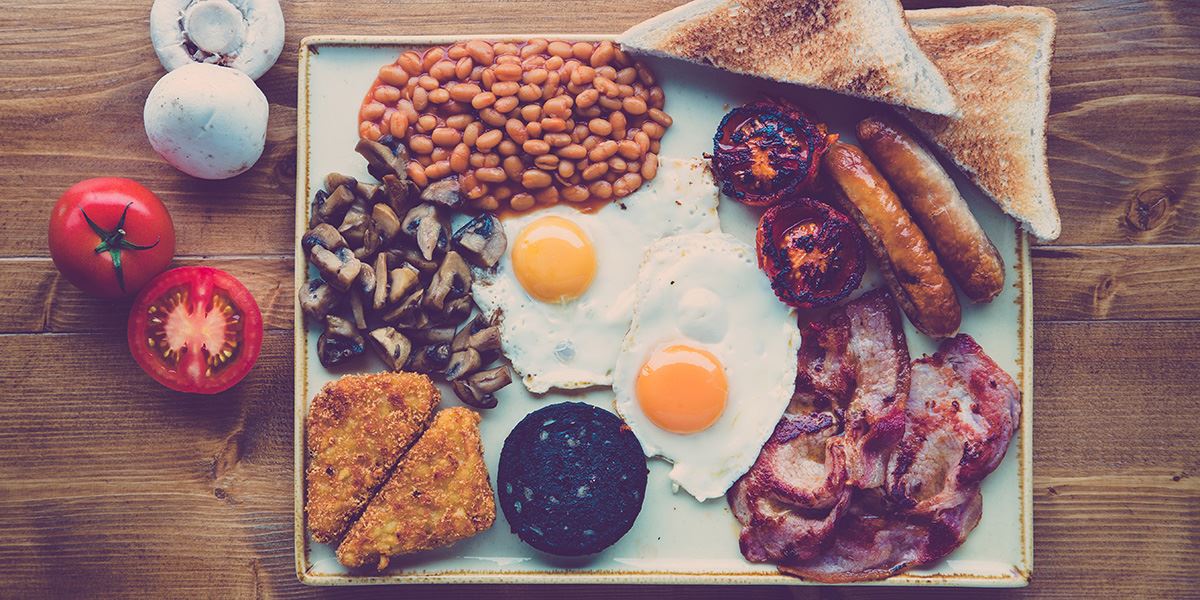
There’s nothing like a full-cooked breakfast to start off the day
Manners
Endless talk about the weather and strict rules about manners. Yes, the people of the UK and Ireland are a little bit weird. A very peculiarly unspoken rule is to always apologise – even if whatever you’re apologising for is not actually your fault. People are also very strict when it comes to punctuality and make a great effort to arrive on time, so it is considered impolite to be late, even with by few minutes. And if you’re in the UK, be prepared to queue. And if you push in, there’s likely to be a riot!
Artists
The UK and Ireland has given the world some of the greatest painters. Discover Francis Bacon, JMW Turner, William Hogarth, John Ruskin, John Everest Millais, Thomas Gainsborough, David Hockney and Damien Hirst. Some of the best galleries to see these works are the National Portrait Gallery in London, National Gallery of Ireland in the heart of Georgian Dublin or the Kelvingrove Museum in Glasgow which is Scotland’s most popular museum, and indeed the UK’s most visited museum outside of London.
National Trust
This independent charity looks after historic houses, buildings and gardens to coast and countryside in England, Wales and Northern Ireland. The National Trust for Scotland looks after castles and battlefields, gardens and glens, islands and wildlife. Buckinghamshire is home to more National Trust properties than any other county, many blessed with jaw-droppingly beautiful gardens. Picture perfect views, long winding paths and flower-filled formal gardens make the heart sing at Cliveden, Stowe, Hughendon and Waddesdon Manor.
Cricket
Cricket was first recorded in 16th-century England, and it was played everywhere from grammar schools to farm communities. But things really took off when 18th-century nobles realised that not only was it a great sport but also an excellent opportunity for betting. There are two major cricket grounds in London; Lord’s, in St John’s Wood near Regent’s Park, is one of the most famous in the world and is home to Middlesex County Cricket Club, while The Oval, in Kennington, south London, is home to Surrey County Cricket Club.
Festivals
The UK is home to many of the the world’s most famous music festivals; Glastonbury, Leeds and Reading, but it is now also home to a huge range of food, drink, literary and comedy festivals – and much more. There are the Edinburgh Fringe and Tattoo Festivals, The Big Feastival and Notting Hill Carnival to name but a few.

Fallout Boy at Leeds Festival, Leeds











